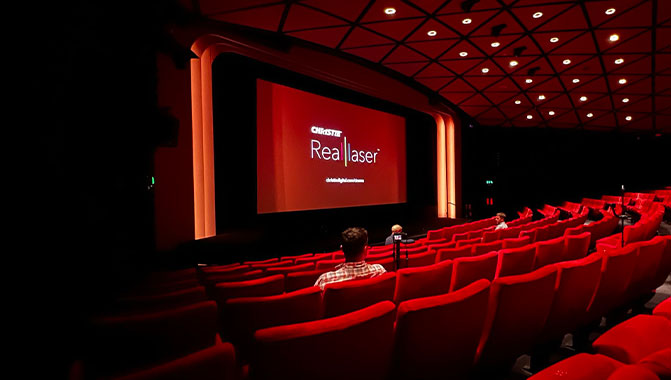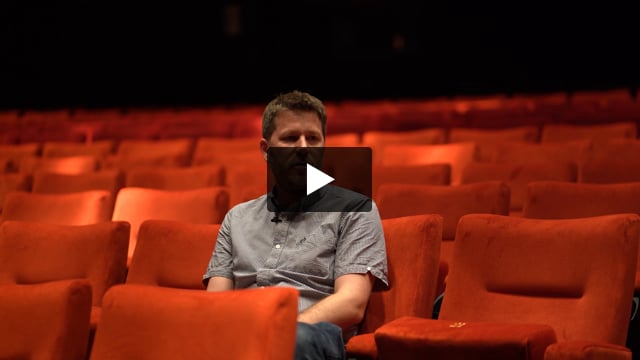The British Film Institute (BFI)
London, UK
Cinema
CP4420-RGB projector, Vive Audio LA3i line arrays, S215 & 218-LP subwoofers, LA3Si surround
BFI adopts Christie RGB pure laser and Vive Audio
An interesting chapter in cinema projection history – but less known – is that the BFI and Christie worked to spearhead the switch from film to digital in the early years of this century, together creating the first digital screen lab in Europe. BFI’s head of technology, Dominic Simmons, worked at the BFI – and with Christie – for over 20 years and has seen technology advance through that time, including the introduction of RGB pure laser projection. “The use of the RGB in the 2019 [London Film] Festival was such a success it led us to purchase it in 2020 – it was the catalyst and trigger to installing RGB pure laser at our main venue,” explained Simmons.
The British Film Institute (BFI) is not only the UK’s leading organisation for the moving image but has the world’s largest film and television archive. BFI’s discerning members flock to its permanent headquarters by the river Thames to watch contemporary, classic and independent movies. “We liked the results we saw with laser at the Festival. It also went down very well with the filmmakers,” noted Simmons, “so could also impress audiences at the NFT (National Film Theatre).”
The previous Christie projector had, impressively, been in-situ for 14 years. Solaria Series One was a very well-made Xenon projector!’ stressed Simmons, going on to confide, “In a way, Christie has shot itself in the foot by making these projectors so reliable. We have had this one 14 years before looking at replacing it and it still meets the spec. It has been a work horse but it seemed the right moment to invest and move into pure RGB laser.”
Industry and public love the images
Directors and film representatives would come in before the official screenings at the London Film Festival to sample their work on Christie RGB pure laser projectors, and they loved the images. “The pictures we can now show audiences on our main screen in NFT1 are vivid with very good contrast, and the picture quality was an important consideration. Sustainability is also a key issue and the pure laser helps to reduce energy use, so it is a double whammy!” explained Simmons.
The 20,000 lumen CP4420-RGB pure laser projector has an improved color gamut and is future-proof with high frame rate capabilities (4K 120fps or 4K 60fps/eye 3D playback). “It can do everything very well in terms of advanced capabilities. It achieves Rec. 2020 color gamut and has options for showing different films so we will be able to keep up with any changes in cinema,” explained Simmons, who also mused on the nature of the cinema projection industry: “What I like is how technology companies in cinema push the boundaries of technology. There is a questing sense about the technologies, embracing the potential of what is possible for filmmakers.”
Low maintenance, energy savings, easy set-up, vignetting control
On the operational side, the projector is designed with a long-lasting light source – 50,000 hours of stable DCI brightness. “The low maintenance is clearly positive -there will be savings with every use and no change of lamps which is very helpful,” says Simmons adding, “We have a matt white screen which is a good fit for the laser projector.”
Other aspects of the RGB pure laser projector proved useful. “The sealed optics are ideal because once you’ve set it up it is very easy, just switch it on and change channel. And there is a new software suite that has worked well,” commented Simmons. “They are meaningful improvements - intuitive and simple - and there is a good interface. It’s made a difference in the quality we are getting from the projector. It allows us to calibrate and line up different parts of the screen and gives you more control to finesse the picture. We were getting vignetting on lower right part of the screen and this has been reduced.”
Vive Audio upgrades sound quality
The refurbishment updated the audio. “I heard Vive Audio in another cinema and thought it sounded very good indeed,” explained Simmons. “We wanted to upgrade and Christie had a really great solution with the ribbon drive technology (line arrays). Christie helped in the consultancy process and NFT1 was fitted with 5 LA3i line arrays and 5 S215 subwoofers for the screen channels, 2 218-LP subwoofers and LA3Si surround loudspeakers.” The overall sound quality and experience also benefits from Powersoft amplifiers.
“There is better dispersion, detail and clarity in dialogue and with line array giving a better angle of dispersion, the audio experience on the peripheries of the auditorium has improved. The system is good quality and reliable,” said Simmons.
Mirroring the BFI’s experience with laser projection at the London Film Festival, they have also received very positive remarks says Simmons. “We have had the new sound quality noticed and commented on both by audiences and film directors. The feedback has been great.”



